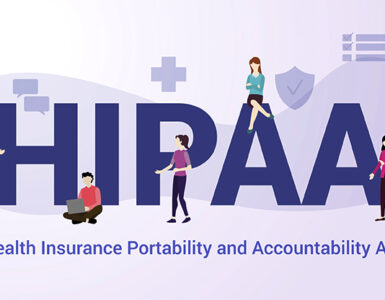 Claims processing standards expected to cut administrative burden on healthcare providers, insurance companies, and states, says Department of Health and Human Services.
Claims processing standards expected to cut administrative burden on healthcare providers, insurance companies, and states, says Department of Health and Human Services.The Department of Health and Human Services (HHS) has issued an interim final rule that prescribes operating standards for electronic fund transfers (EFT) and electronic remittance advice (ERA)–the payment explanation that gives details about providers’ claims payment. Last July, HHS released standards for insurance eligibility and claims status transactions.
Required by the Health Insurance Portability and Accountability Act (HIPAA), these operating rules are expected to cut $16 billion from the administrative costs of healthcare providers, insurance companies, and states over the next 10 years. HHS anticipates that the EFT and ERA rules alone will save up to $4.5 billion.
Currently, health plans send providers electronic payments separately from electronic remittance advice. Physician practices and hospitals use the ERAs to post the payments in their financial systems, but cannot link those postings automatically to the funds transfers. Under the new rules, a trace number will allow providers to link the two transactions, eliminating the time and expense of manual reconciliation.
Cindy Dunn, a senior consultant at MGMA Consulting, told InformationWeek Healthcare that the need to manually connect funds transfer with remittance advice imposes a significant burden on physician practices. So the new regulation will help them, she said.
The same is true for hospitals, said Doug Hires, a health IT consultant who is a partner in Santa Rosa Consulting. Because ERAs are often sent days or weeks before funds are transferred, he said, it’s especially troublesome to “re-associate” the two transactions manually. Consequently, he said, the new regulation “is a big deal for hospitals.”
However, he added, some coordination and testing will be required to implement the new operating rules, just as with the new HIPAA 5010 transaction set. “There’s going to be some modification of systems and processes. Hopefully, the benefits are going to far outweigh the costs of these changes.”
While the regulation goes into effect immediately, health plans have until Jan. 1, 2014 to implement the new EFT and ERA standards. They must use the operating rules for eligibility and claims status by Jan. 1, 2013. This will require both payers and vendors of billing systems to update their software, but that wasn’t unexpected, Dunn noted.
The Committee on Operating Rules for Information Exchange (CORE), a branch of the Council for Affordable Quality Healthcaare (CAQH), which includes insurers and other industry stakeholders, has developed many of the operating rules for HHS. CORE worked with the Electronic Payments Association, a banking group, to create the EFT and ERA standards.
The Patient Protection and Affordable Care Act requires HHS to write regulations that implement the HIPAA-mandated operating rules over a five-year period ending in 2016. Besides the two interim final rules it has already issued, HHS plans to issue further administrative simplification rules that address:
— A standard unique identifier for health plans,
— A standard for claims attachments, and
— Requirements that health plans certify compliance with all HIPAA standards and operating rules.
In its announcement of the new regulation, HHS cited a 2010 study in Health Affairs that found physicians spend nearly 12% of their revenue from patient care on administrative tasks, including billing and collection. Researchers estimated that simplifying these systems could save four hours per week of professional time per physician and five hours of support staff time every week.
“As a nurse, I know the importance of giving healthcare professionals time to focus on patient care,” said Marilyn Tavenner, acting administrator of the Centers for Medicare and Medicaid Services (CMS). “The less time a physician has to spend on paperwork is that much more time that can be devoted to patient care. Having standardized procedures across the healthcare industry can only lead to lower costs and greater efficiencies all around.”




